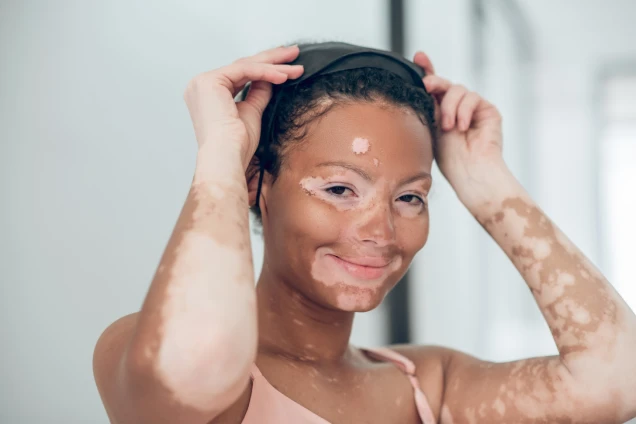
Vitiligo is a condition where the skin loses its pigment (melanin), and white patches appear on the skin. It occurs when the melanocytes, the cells responsible for producing melanin, stop functioning or die. It is a chronic condition affecting millions of people all over the world. Though it is a disorder of skin colour, the autoimmune nature of it warrants further investigations to look out for other associated auto immune conditions. Though this condition is limited to skin, it causes a lot of psychological morbidities due to the stigma associated with that and for the mere cosmetic importance of it.
1. Segmental Vitiligo: it affects one side or part of the body, often appearing at a younger age.
2. Non-segmental Vitiligo: More common, with patches appearing symmetrically on both sides of the body. This type is also called as vitiligo vulgaris. It is the most common variety seen.
3. Universal Vitiligo: Rare, where most of the body loses pigment.
Treatment: Management of Vitiligo strategies depend on factors such as the subtype of Vitiligo, the extent of Vitiligo and the disease activity. The main objectives of treatment are to hold the disease progression, to induce Repigmentation, melanocyte, regeneration, and proliferation, and finally to prevent reoccurrence and maintain the re pigmentation.
While there is no cure, treatments can help restore color or manage the condition: